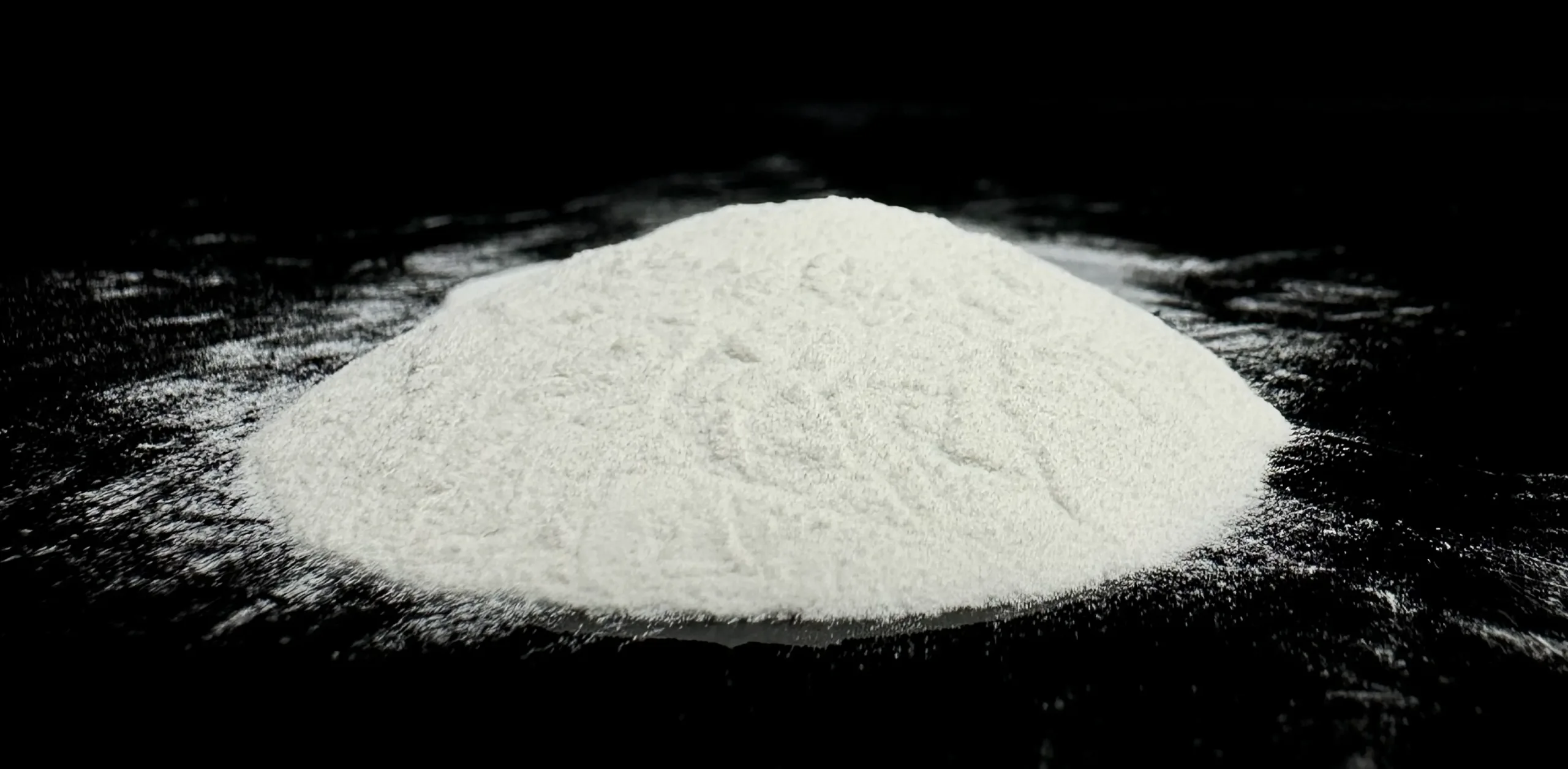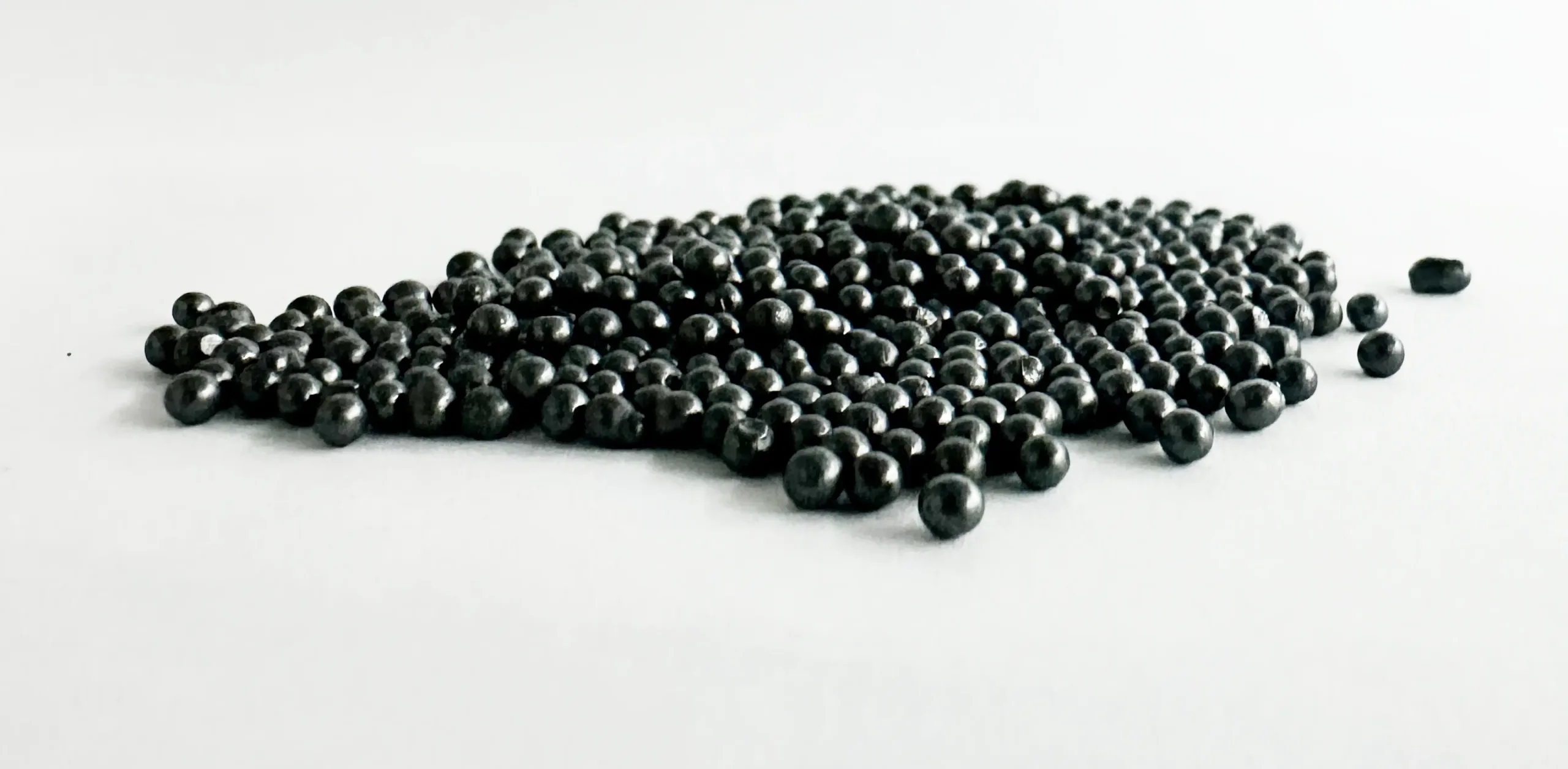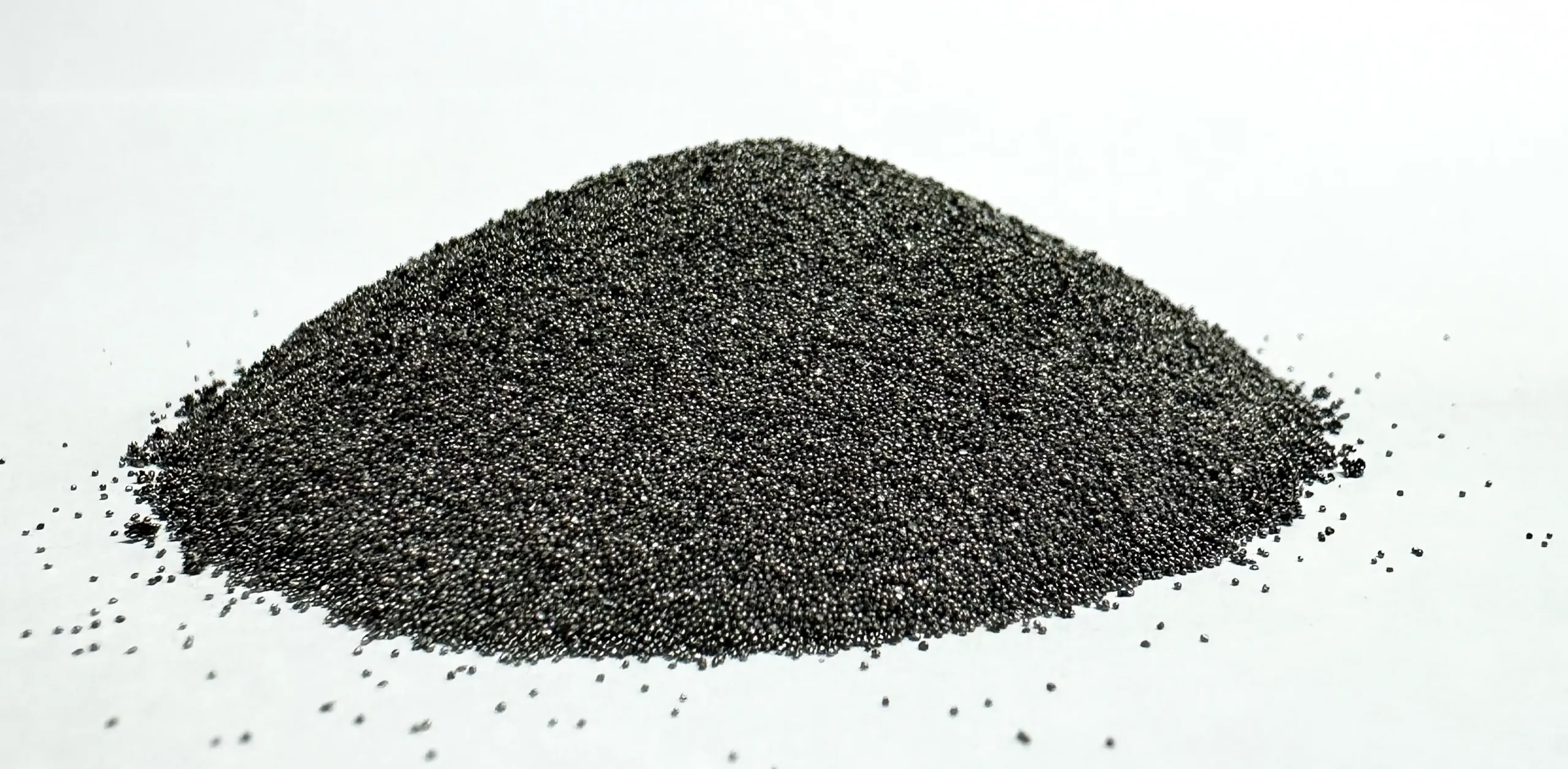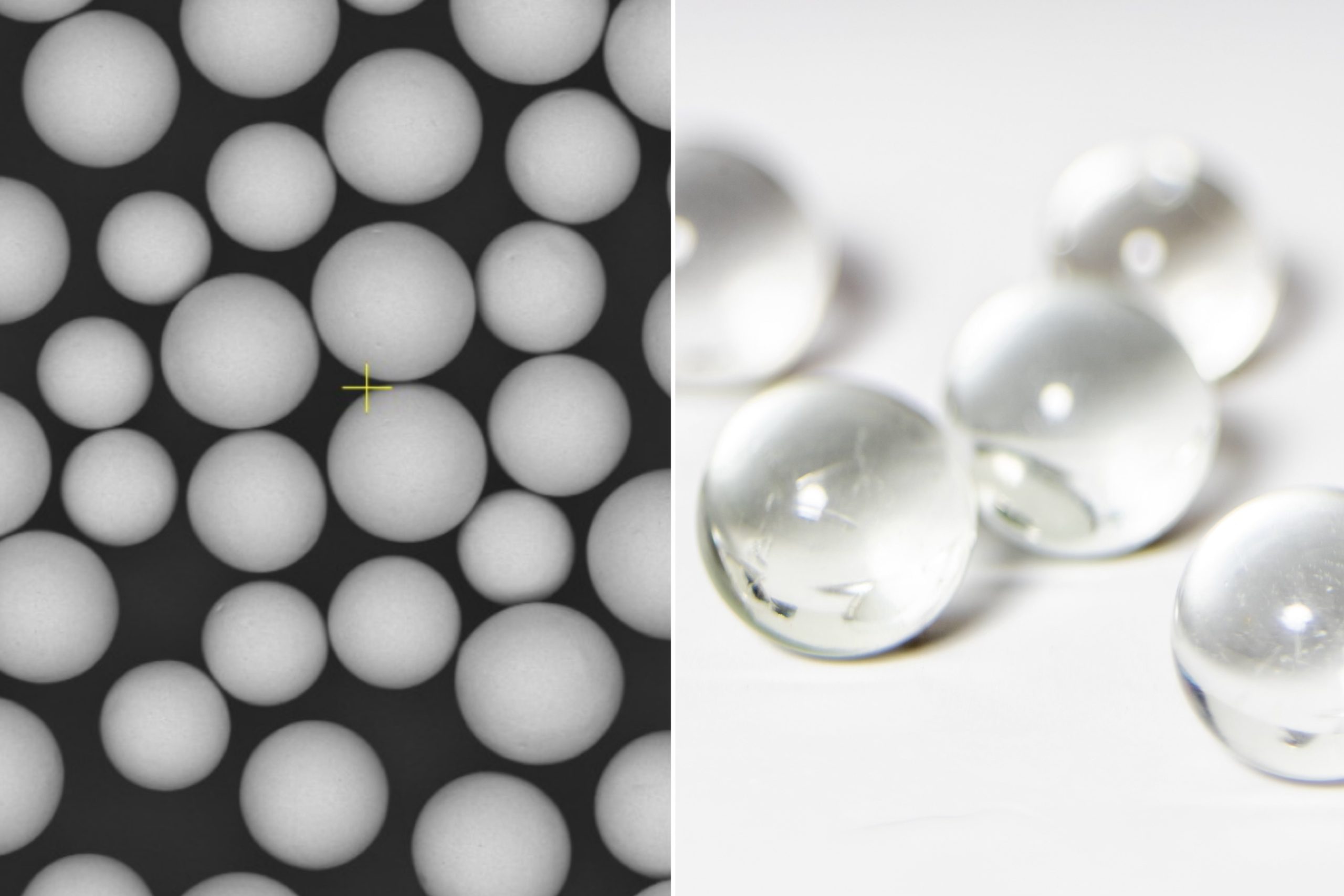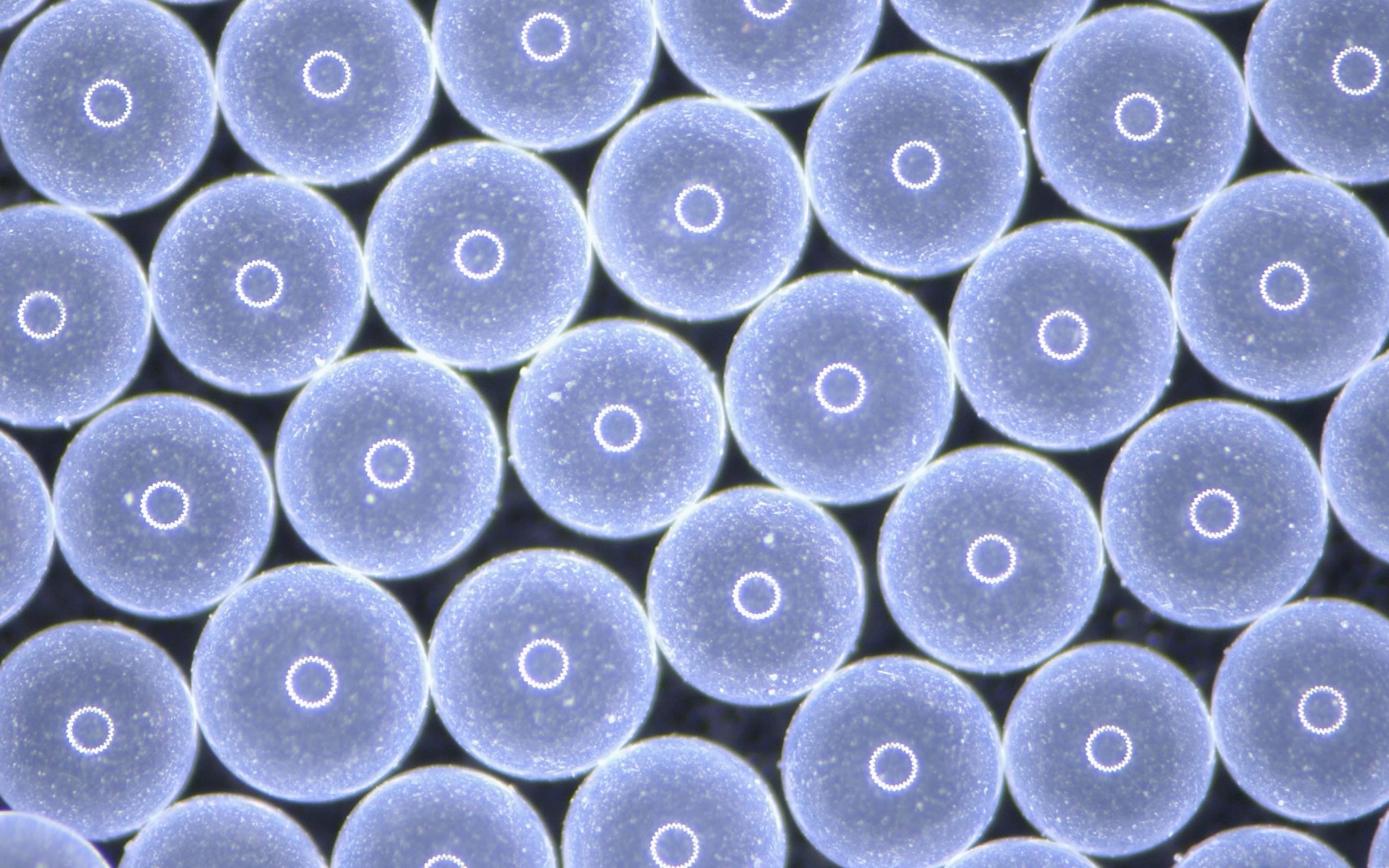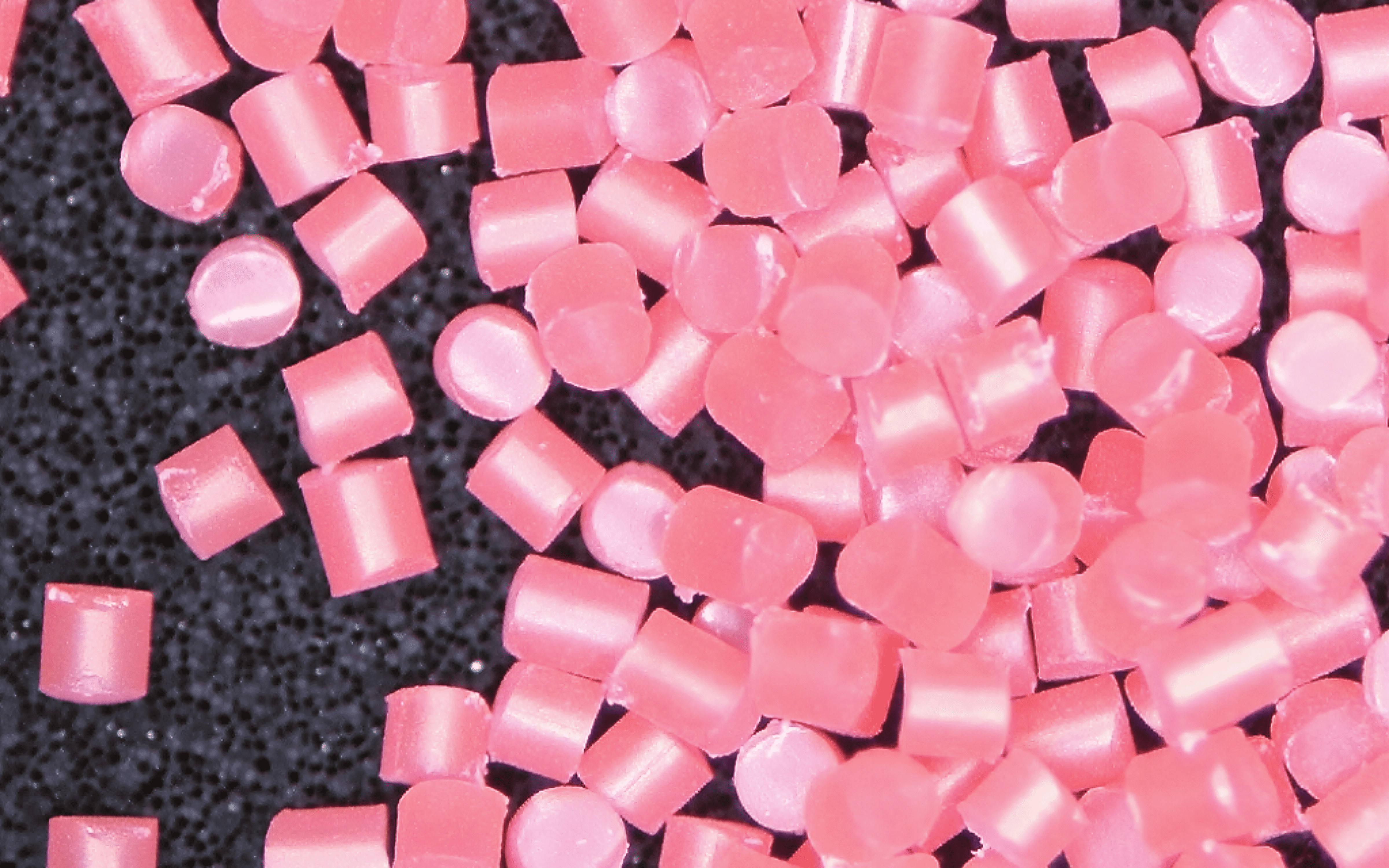Comment les billes de zircone améliorent la stabilité et la longévité des implants
3 septembre 2024
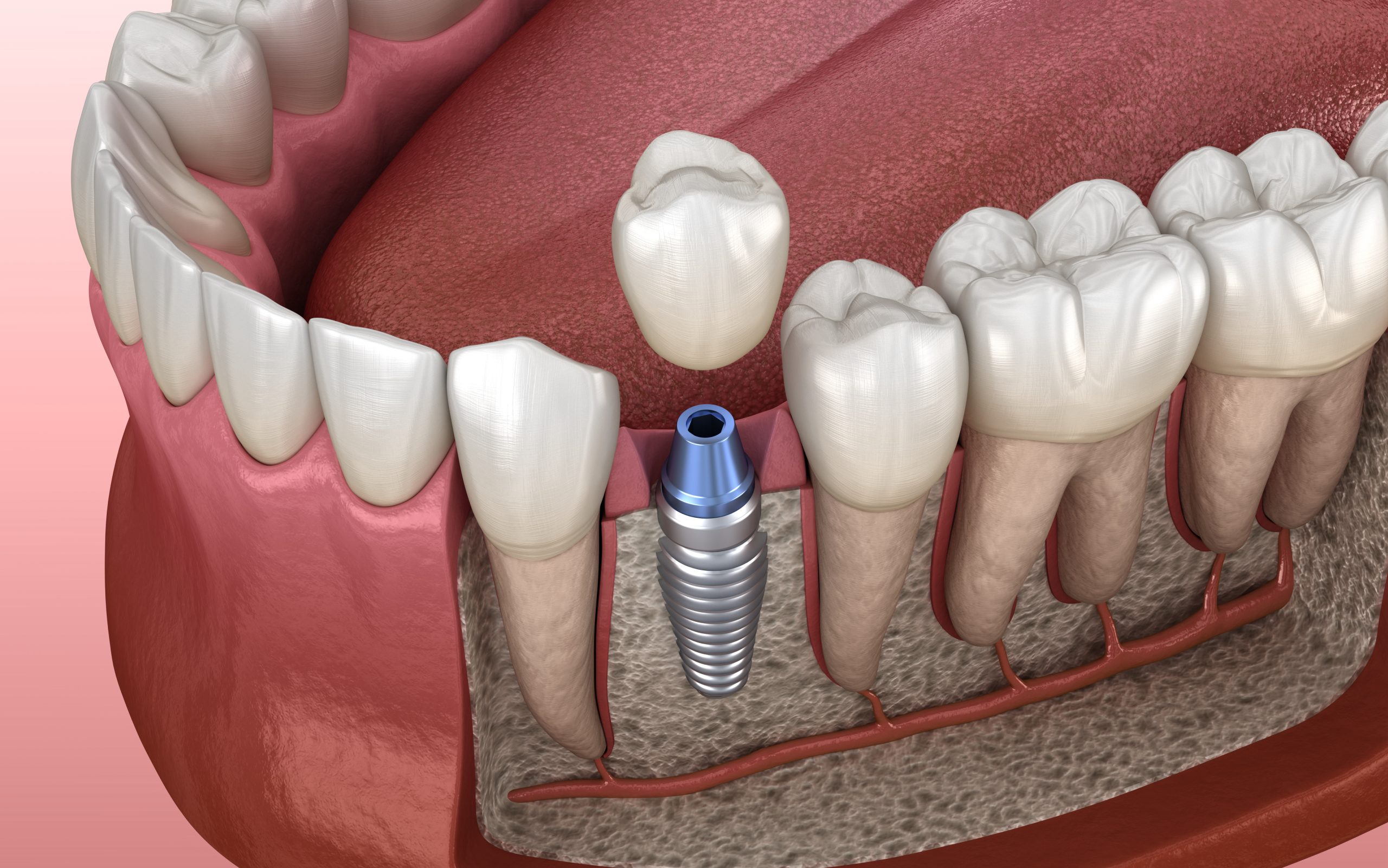
Dans la technologie médicale moderne, les implants, qui vont des implants dentaires aux prothèses orthopédiques, sont très répandus et offrent à de nombreux patients la possibilité de restaurer leur fonction et d'améliorer leur qualité de vie. Cependant, la stabilité des implants dans le corps est souvent une préoccupation majeure pour les médecins et les patients. Pour relever ces défis, les scientifiques explorent et développent en permanence de nouveaux matériaux et de nouvelles technologies afin d'améliorer les performances des implants. Les billes de sablage en zircone, en tant que matériau de traitement de surface de haute performance, ont démontré des avantages significatifs dans l'amélioration de la stabilité et de la longévité des implants.
Définition et importance des implants
Définition
Les implants sont des dispositifs médicaux ou des matériaux insérés chirurgicalement dans le corps. Ils peuvent être fabriqués à partir de métaux, de céramiques, de polymères ou de composites et sont généralement utilisés pour remplacer, réparer ou améliorer la fonction des tissus ou des organes du corps. Les types d'implants comprennent les implants dentaires, les prothèses orthopédiques, les prothèses articulaires et les endoprothèses cardiaques.
Importance
- Restauration de la fonction : Les implants peuvent contribuer à restaurer des fonctions corporelles. Par exemple, les implants dentaires peuvent remplacer des dents manquantes, rétablissant ainsi la fonction de mastication et l'esthétique ; les prothèses articulaires peuvent améliorer la fonction articulaire, réduire la douleur et améliorer la mobilité.
- Amélioration de la qualité de vie : Pour de nombreux patients, l'utilisation d'implants peut améliorer considérablement leur qualité de vie. Des implants réussis peuvent réduire la douleur, améliorer la mobilité et rétablir des activités quotidiennes normales.
- Effets à long terme : Des implants de haute qualité peuvent avoir des effets à long terme, réduisant ainsi la nécessité d'autres traitements. Par exemple, les prothèses orthopédiques peuvent soutenir efficacement les structures du squelette et réduire les fractures et les lésions articulaires.
- Innovation et développement : Au fur et à mesure que la technologie progresse, la conception des implants et des matériaux ne cesse d'innover, offrant ainsi davantage d'options de traitement et de meilleurs résultats. Les nouveaux matériaux et les nouvelles technologies de traitement de surface peuvent améliorer de manière significative la durabilité et la biocompatibilité des implants.
Caractéristiques des billes de sablage en zircone
- Dureté élevée et résistance à l'usure
La zircone (ZrO₂) est un matériau extrêmement dur avec une dureté de Mohs de 8-9, la deuxième après le diamant. Cela permet aux billes de zircone de traiter efficacement les surfaces pendant le sablage, en éliminant les oxydes et les contaminants et en améliorant de manière significative la rugosité de la surface. Cette dureté élevée signifie que les billes de zircone ne s'usent pas pendant le traitement de surface, ce qui maintient leur efficacité à long terme. Le traitement de surface peut améliorer la liaison avec le tissu osseux, augmentant ainsi la stabilité de l'implant.
- Stabilité chimique
La zircone présente une excellente stabilité chimique et résiste à diverses corrosions chimiques dans l'organisme. Les billes de zircone peuvent former une couche protectrice stable sur la surface de l'implant, empêchant efficacement la corrosion et la dégradation. Cette stabilité chimique garantit que les implants conservent leurs propriétés mécaniques et leur intégrité structurelle au fil du temps, prolongeant ainsi leur durée de vie.
- Biocompatibilité
La biocompatibilité de la zircone est un avantage majeur dans les applications médicales. Les matériaux en zircone n'induisent pas de réactions de rejet dans les tissus corporels et se lient bien aux tissus biologiques et aux os. La surface rugueuse obtenue par sablage améliore la force d'adhérence entre l'implant et le tissu osseux. Cette excellente biocompatibilité fait des billes de sablage en zircone un outil important pour améliorer la stabilité et la longévité des implants.
Applications des billes de sablage en zircone dans les implants
- Conception personnalisée
La conception d'implants sur mesure nécessite des ajustements personnalisés en fonction des besoins spécifiques du patient et des caractéristiques de son corps. Les billes de sablage en zircone permettent d'obtenir un traitement de surface précis en ajustant la taille des particules et l'intensité du sablage. Ce traitement de surface personnalisé assure une liaison optimale entre l'implant et les tissus du patient, améliorant ainsi l'adaptabilité et la stabilité. Par exemple, dans la conception d'implants dentaires personnalisés, le sablage peut ajuster avec précision la rugosité de la surface et la forme de l'implant en fonction de la structure buccale du patient, améliorant ainsi l'adaptabilité de l'implant.
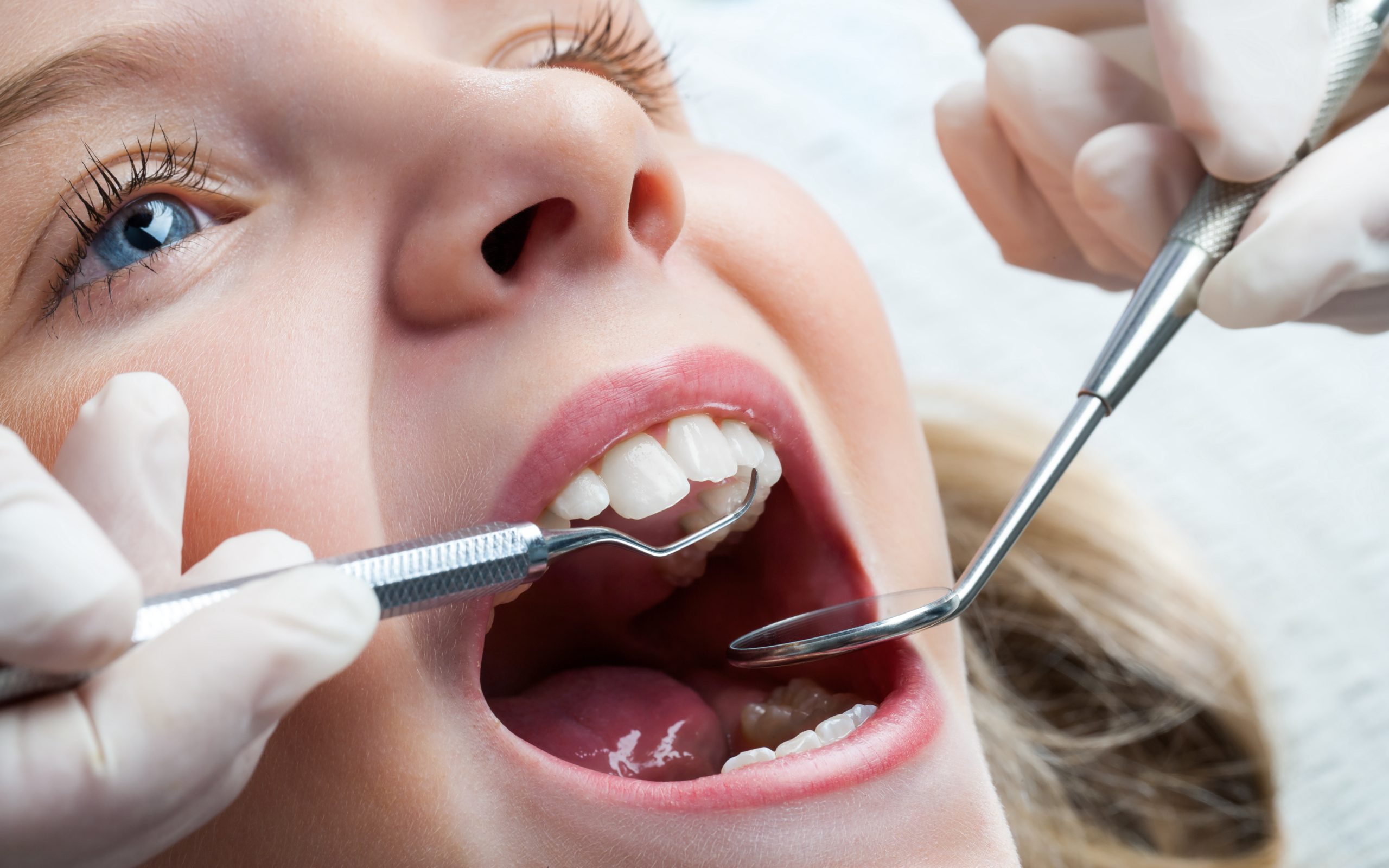
Les différences individuelles doivent être personnalisées
- Technologie du micro-usinage
Avec les progrès de la technologie médicale, la tendance est à la miniaturisation des implants. Les billes de sablage en zircone présentent des avantages uniques pour le traitement des implants à micro-échelle. Les implants miniaturisés nécessitent un traitement de surface plus précis, et les billes de sablage en zircone peuvent produire des effets de sablage uniformes et de haute qualité à petite échelle, répondant ainsi aux exigences rigoureuses du traitement de surface à micro-échelle. Par exemple, le traitement par sablage des neurostimulateurs à micro-échelle peut améliorer leur force d'adhérence avec les tissus corporels, garantissant ainsi un fonctionnement stable à long terme.
- Suivi clinique à long terme
L'impact des billes de zircone sur la stabilité à long terme des implants doit être validé par un suivi clinique prolongé. Le suivi de l'utilisation de l'implant par le patient, l'enregistrement des changements de performance et des complications potentielles peuvent fournir des données précieuses pour la sélection future des matériaux et l'amélioration des processus. Cette collecte et cette analyse de données à long terme peuvent aider à évaluer si le traitement par sablage réduit effectivement les taux d'échec des implants et à fournir des recommandations d'amélioration.
Impact des billes de sablage en zircone sur les implants
- Rôle du traitement de surface
La rugosité de la surface d'un implant affecte directement sa stabilité dans le corps. Le traitement par sablage peut augmenter efficacement la rugosité de la surface de l'implant, ce qui permet d'améliorer la liaison avec le tissu osseux environnant. Une surface rugueuse fournit plus de points de verrouillage mécaniques, améliorant ainsi la fixation de l'implant. Cette amélioration de la force d'adhérence permet de réduire le risque de déplacement de l'implant et d'améliorer la stabilité à long terme.
- Prévention de la corrosion et de la dégradation
L'environnement du corps comprend des fluides acides et alcalins, qui peuvent présenter des risques de corrosion ou de dégradation pour les implants. La couche protectrice formée par les billes de zircone sur la surface de l'implant peut bloquer efficacement ces substances corrosives, réduisant ainsi le risque de corrosion et prolongeant la durée de vie de l'implant.
Comment les perles de sablage à la zircone améliorent la longévité
- Augmentation de la résistance mécanique
La résistance mécanique est un facteur clé pour déterminer la durée de vie d'un implant. Les billes de sablage de zircone peuvent améliorer la résistance mécanique de la surface de l'implant pendant le traitement. Le sablage élimine les défauts mineurs et les points de contrainte à la surface de l'implant, réduisant ainsi le risque d'endommagement pendant l'utilisation. L'augmentation de la résistance mécanique permet à l'implant de mieux supporter les charges mécaniques à l'intérieur du corps, ce qui prolonge sa durée de vie.
- Réduire l'usure et la fatigue
Les implants subissent de multiples cycles de contraintes mécaniques au cours d'une utilisation à long terme, ce qui peut entraîner des dommages dus à l'usure et à la fatigue. Les billes de sablage à la zircone peuvent réduire efficacement l'usure et la fatigue en améliorant la rugosité et la dureté de la surface de l'implant. Les implants sablés ont des surfaces plus lisses, réduisant la friction et l'usure, ce qui prolonge naturellement la durée de vie de l'implant.
Cas d'application pratique
- Implants dentaires
L'application de billes de sablage en zircone dans les implants dentaires a donné des résultats remarquables. Le traitement par sablage améliore considérablement la rugosité de la surface des implants dentaires, renforçant ainsi leur adhérence à l'os alvéolaire. Cette amélioration permet non seulement d'accroître la stabilité de l'implant, mais aussi de réduire de manière significative les taux de complications postopératoires.
Cas 1 : Implants dentaires Straumann
Straumann, fabricant renommé d'implants dentaires, utilise des billes de zircone dans son processus de traitement de surface. Cela permet d'améliorer la rugosité de la surface et la force de verrouillage mécanique, ce qui améliore la liaison avec le tissu osseux. Les essais cliniques et le suivi à long terme ont révélé que les implants traités avec des billes de zircone atteignaient un taux d'intégration osseuse de 95% dans les 6 mois, ce qui est nettement supérieur au taux de 85% obtenu avec les méthodes traditionnelles. Sur une période de 5 ans, le taux d'échec des implants sablés n'était que de 2%, contre 5% pour les méthodes traditionnelles.1
Cas 2 : Nobel Biocare
Nobel Biocare utilise également la technologie du sable de zircone pour ses implants dentaires. Cette technologie améliore considérablement la qualité de la surface et l'intégration osseuse. La recherche clinique indique que les implants utilisant cette technologie ont donné d'excellents résultats à long terme, avec un taux de réussite de 98% contre 92% pour les implants traditionnels. Les implants avec des billes de zircone ont montré une augmentation de 20% de la force d'intégration osseuse après 1 an.2
- Implants orthopédiques
En orthopédie, les billes de zircone sont également largement utilisées dans divers implants tels que les prothèses articulaires et les vis à os. Les implants orthopédiques sablés se lient mieux au tissu osseux, ce qui améliore la stabilité de l'implant. La recherche montre que les implants orthopédiques sablés sont plus performants que les traitements traditionnels, avec une durée de vie plus longue et une meilleure durabilité.
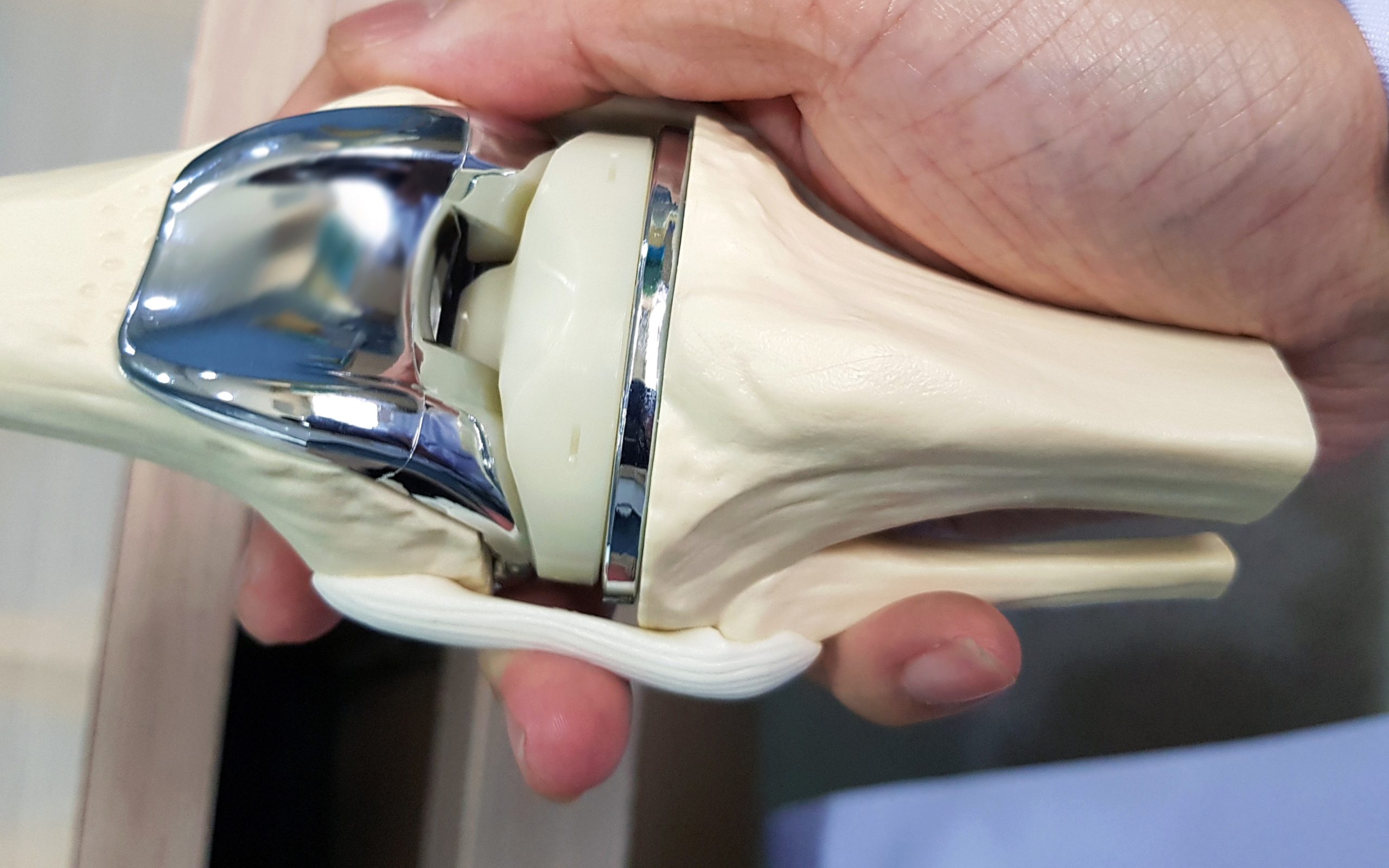
prothèse de genou
Cas 1 : Implants orthopédiques Aesculap
Aesculap utilise des billes de zircone dans ses implants orthopédiques. L'entreprise a mené des expériences et des études cliniques approfondies pour vérifier l'efficacité de cette technologie. Dans des environnements corporels simulés, les implants orthopédiques sablés ont montré des améliorations significatives en termes de durabilité. Après 5 millions de cycles de charge, ces implants ne présentaient aucune usure significative ni aucun dommage dû à la fatigue, alors que les implants non traités présentaient des fissures de fatigue après 3 millions de cycles. Des essais cliniques sur des implants de fusion lombaire ont montré un taux de récupération de 90% en un an pour les implants sablés, contre 75% pour les implants traditionnels.3
Cas 2 : DePuy Synthes
DePuy Synthes utilise des billes de sablage en zircone pour les prothèses articulaires de la hanche. Des études cliniques à long terme ont révélé que 90% des implants sablés ont conservé une bonne stabilité pendant 10 ans, tandis que 30% des implants non traités ont connu des problèmes de stabilité. La durée de vie moyenne des prothèses de hanche sablées est passée de 8 à 9,6 ans, soit une extension de 20%.4
Applications des billes de sablage en zircone dans divers domaines
- Recherche biomédicale
L'application des billes de sablage de zircone va au-delà des implants traditionnels et s'étend à la recherche biomédicale. Par exemple, dans le domaine de l'ingénierie tissulaire, les implants sablés peuvent servir de plates-formes de recherche pour comprendre les effets de différents matériaux sur la croissance des tissus. Combinées à des études de culture cellulaire, les billes de zircone peuvent contribuer à optimiser la conception des implants et à améliorer les résultats des applications dans les domaines biomédicaux.
- Matériaux composites dans les dispositifs médicaux
Les dispositifs médicaux modernes utilisent de plus en plus de matériaux composites pour améliorer les performances et la fonctionnalité. Les billes de sablage de zircone peuvent fournir un traitement de surface uniforme pour ces composites, améliorant ainsi les performances globales. Par exemple, dans les implants orthopédiques composites, le traitement par sablage peut améliorer la liaison avec le tissu osseux tout en augmentant la résistance et la durabilité du matériau.
- Fabrication additive (impression 3D)
La fabrication additive (impression 3D) transforme la production d'implants médicaux. Les billes de zircone peuvent être utilisées pour traiter les surfaces des implants imprimés en 3D afin d'améliorer les performances mécaniques et la biocompatibilité. Le grenaillage peut améliorer la rugosité de la surface et la résistance structurelle des implants imprimés en 3D, ce qui se traduit par de meilleures performances dans les applications médicales réelles.
Défis et orientations futures
- Défis actuels
- Complexité des processus : Le processus de sablage avec des billes de zircone nécessite un contrôle précis des paramètres tels que la pression de sablage, la taille des particules et le temps de traitement. Toute déviation peut conduire à des résultats de traitement incohérents, affectant la performance des implants.
- Coûts des matériaux : Le coût de production des billes de zircone est relativement élevé, ce qui peut augmenter le coût de fabrication des implants. Pour les applications sensibles aux coûts, il est essentiel de trouver un équilibre entre les performances du matériau et le coût.
- Adaptabilité technique : Différents types d'implants et de matériaux peuvent nécessiter différentes méthodes de sablage. L'optimisation des techniques de sablage pour les différents matériaux et modèles d'implants est un défi important.
- Tendances futures du développement
- Innovation technologique : Les progrès de la science des matériaux et de la technologie de fabrication peuvent déboucher sur de nouvelles techniques et de nouveaux équipements de sablage, améliorant encore l'efficacité et l'efficience du traitement.
- Matériaux écologiques : Les recherches futures pourraient se concentrer sur le développement de matériaux et de procédés de sablage plus respectueux de l'environnement afin de réduire l'impact sur l'environnement.
- Applications intégrées : La combinaison de technologies de fabrication avancées, telles que l'impression 3D et la nanotechnologie, peut encore améliorer le potentiel des billes de sablage en zircone dans le domaine des implants. L'optimisation des matériaux et des processus pourrait conduire à des implants plus performants.
- Médecine personnalisée : Avec le développement de la médecine personnalisée, les futurs implants pourront être personnalisés en fonction des besoins individuels des patients, et la technologie de sablage devra s'adapter à ces exigences personnalisées.
Les billes de sablage en zircone jouent un rôle crucial dans l'amélioration de la stabilité et de la longévité des implants. Leurs propriétés uniques, telles qu'une dureté élevée, une stabilité chimique et une biocompatibilité, contribuent à une meilleure liaison avec les tissus corporels, à la prévention de la corrosion et à l'amélioration de la résistance mécanique. Grâce à des applications pratiques et à des validations cliniques, les billes de sablage en zircone démontrent leurs avantages significatifs dans divers domaines médicaux. Malgré les difficultés existantes, les recherches en cours et les avancées technologiques promettent d'améliorer encore les performances et le champ d'application des billes de zircone, offrant ainsi des solutions plus efficaces et plus durables pour les implants médicaux.
Références:
- Les données proviennent de l'article "Effect of Surface Treatment on Osseointegration of Dental Implants" (publié dans le Journal of Periodontology) et des documents techniques et manuels d'information sur les produits figurant sur le site officiel de Straumann.
- Les données proviennent de l'article "Clinical Outcomes of Implants with Different Surface Treatments" (publié dans Clinical Oral Implants Research), ainsi que des livres blancs techniques et des données sur les produits figurant sur le site officiel de Nobel Biocare.
- Les données proviennent de l'article "Long-Term Durability of Orthopedic Implants with Surface Modifications" (publié dans le Journal of Biomedical Materials Research) et des rapports techniques et données sur les produits publiés sur le site officiel d'Aesculap.
- Les données proviennent de l'article "Comparative Study of Hip Prosthesis Longevity with Surface Treatment Techniques" (publié dans The Journal of Arthroplasty) ainsi que des rapports de recherche clinique et des spécifications des produits figurant sur le site officiel de DePuy Synthes.



